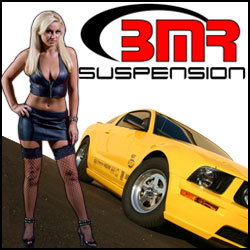07TGGT
@user
The reason I am starting this thread is to gather some information on how breathers and catch cans affect vacuum.
I have been trying to research what amount of vacuum and the amount of pressure is needed for the engine to function properly, especially with the TiVCT since it relies on a specific pressure to operate, but haven't been able to find anything specific for the 5.0.
I am probably overthinking it but I would like to know before I buy the components to build my own breather system or remote catch can system. I don't know how much more, if any, a FI application is affected than a NA application.
If you look in this thread, http://http://www.s197forum.com/forum/showthread.php?p=1858371#post1858371, you will see what two options I am trying to decide between. I will be running the Paxton on 5-9lbs.
So, on to my questions...
-What is the amount of vacuum needed for the 5.0L to function properly, along with the other systems?
-What oil pressures should be seen at cold temperatures(enviroment) upon start-up, idle, and cruising?
-What oil pressures should be seen at hot temperatures(enviroment) upon start-up, idle, and cruising?
-What oil temperatures are ideal, both cold(start-up) and hot(operating temperature)?
-Which will cause less of a loss of vacuum, breather can or catch can?
-Does the diameter of the hose going to the breather can/catch can affect the vacuum?
-Does the diameter of the hose going to the breather can/catch can affect the pressure?
-Does the diameter of the hose going to the breather can/catch can affect the flow going in and out?
-If the catch can has two seperate hose sizes such as AN-8 and AN-12, how adversly will that affect the system?
I think I covered everything I wanted to know! LOL
I have been trying to research what amount of vacuum and the amount of pressure is needed for the engine to function properly, especially with the TiVCT since it relies on a specific pressure to operate, but haven't been able to find anything specific for the 5.0.
I am probably overthinking it but I would like to know before I buy the components to build my own breather system or remote catch can system. I don't know how much more, if any, a FI application is affected than a NA application.
If you look in this thread, http://http://www.s197forum.com/forum/showthread.php?p=1858371#post1858371, you will see what two options I am trying to decide between. I will be running the Paxton on 5-9lbs.
So, on to my questions...
-What is the amount of vacuum needed for the 5.0L to function properly, along with the other systems?
-What oil pressures should be seen at cold temperatures(enviroment) upon start-up, idle, and cruising?
-What oil pressures should be seen at hot temperatures(enviroment) upon start-up, idle, and cruising?
-What oil temperatures are ideal, both cold(start-up) and hot(operating temperature)?
-Which will cause less of a loss of vacuum, breather can or catch can?
-Does the diameter of the hose going to the breather can/catch can affect the vacuum?
-Does the diameter of the hose going to the breather can/catch can affect the pressure?
-Does the diameter of the hose going to the breather can/catch can affect the flow going in and out?
-If the catch can has two seperate hose sizes such as AN-8 and AN-12, how adversly will that affect the system?
I think I covered everything I wanted to know! LOL
Last edited:






